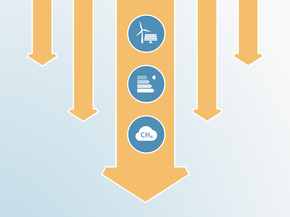Country summary
Overview
NOTE: We have updated our analysis of The Gambia's net zero target. The rest of the assessment is from our July 2022 update.
The Gambia’s domestic efforts to meet the objectives of the Paris Agreement are in line with its fair share due to its small historical responsibility and strong development needs, but with international support it could still significantly improve the extent of its climate action.
At a time when countries should be moving away from fossil fuels, The Gambia continues to promote efforts to extract oil and gas in an attempt to offset its dependency on imported fuel oil. Whilst The Gambia’s reliance on imported oil is a burden on its economy and leaves the country vulnerable to a volatile commodity market exacerbated by Russia’s illegal invasion of Ukraine, the most sustainable way to escape this is via accelerated deployment of renewable energy and electrification of transport. To achieve this The Gambia will need international support.
Increasing its renewable energy generation and transitioning to an affordable sustainable, renewable energy system would put The Gambia fully onto a 1.5°C-compatible pathway, avoid carbon intensive technology lock-in, and improve its energy security, while also achieving a critical milestone for the country’s socio-economic development.
The Gambia’s land sector, accounting for one third of emissions, has turned from a net sink to a source, and, if deforestation continues at the same rate, the government warns there will be no forests left by 2050. It has implemented policies to begin turning the situation around.
The CAT had rated the indicative 2030 target in The Gambia’s first NDC and policies as “1.5°C compatible.” However, while The Gambia’s 2021 NDC is a progression from its 2016 NDC in some ways, such as expanding sector coverage, the update does not lead to lower emissions than the first NDC due to a revision of the BAU scenario.
The total absolute emissions level in 2030 is higher in the updated NDC than in the first. As a result, the CAT’s rating of its conditional NDC target against modelled domestic pathways and the overall rating have fallen from "1.5°C compatible" to "Almost sufficient". The country will need international support and more stringent policies to meet its NDC targets.
The CAT rates The Gambia’s climate targets and policies as “Almost sufficient,” a rating that indicates that some of The Gambia’s climate commitments are not yet consistent with limiting warming to 1.5°C, but could be with moderate improvements.
The CAT rates The Gambia’s policies and action as “1.5°C compatible” when compared to its fair-share contribution. However, there is significant potential for mitigation actions to go beyond The Gambia’s fair share with the help of international support.
The Gambia has an NDC target that would bend its emissions downwards; however, its current policies are not on track to meet this target. The Gambia will need to implement more stringent policies to meet its NDC target, for which it will need additional international support.
One of The Gambia’s strategies to achieve its emission reductions targets is the uptake of renewable energy technology. After a slow start and delays due to COVID-19, The Gambia is now rapidly increasing its renewable energy capacity with a total of 170 MW in solar PV projects in the pipeline for 2021-2025 partially financed by the World Bank and the European Investment Bank.
At a time when countries should be moving away from fossil fuels, The Gambia continues to promote efforts to extract oil and gas in an attempt to offset its dependency on imported fuel oil. The Gambia’s continued reliance on oil is not only a burden on the economy but also leaves the country vulnerable to a volatile commodity market exacerbated by Russia’s illegal invasion of Ukraine.
The full policies and action analysis can be found here.
The CAT rates The Gambia’s NDC target as “Almost sufficient” when compared to the reductions needed within The Gambia’s borders to limit warming to 1.5°C. The “Almost sufficient” rating indicates that The Gambia’s NDC target is not yet consistent with limiting warming to 1.5°C but could be, with moderate improvements. If all countries were to follow The Gambia's approach, warming could be held below—but not well below—2°C.
The CAT rates the unconditional component of The Gambia’s NDC target “1.5°C compatible” when compared to what its fair share contribution is. The “1.5°C compatible” rating indicates that The Gambia’s fair share target is consistent with limiting warming to 1.5°C. The Gambia’s fair share target does not require other countries to make comparably deeper reductions or greater effort, and is in the most stringent part of its fair share range.
Further information on how the CAT rates countries (against modelled domestic pathways and fair share) can be found here.
The Gambia’s emissions from Land-use, land-use change and forestry (LULUCF) contributed to almost one third of the country’s total emissions in 2010. Until 1998 The Gambia’s LULUCF sector was a net carbon sink, but from 1999 onwards the sector has been a net carbon source (Republic of The Gambia, 2012). In 2000, The Gambia’s LULUCF sector had net emissions of approximately 0.52 MtCO2e, and by 2010 emissions had increased by over 200% to 1.18 MtCO2e (Republic of The Gambia, 2012, 2020).
In September 2022, The Gambia submitted its Long-Term Strategy (LTS) for “climate neutral” development by 2050.
Although the LTS provides a comprehensive plan for reaching net zero GHG emission by 2050, it does not include transparent quantifiable targets for how The Gambia will switch its LULUCF sector from a net carbon source to a net carbon sink by 2050 and only covers 81% of GHG emissions. The CAT emissions reduction target evaluation may improve in the future as The Gambia provides more information on its projected pathways. Another way that The Gambia could improve this rating is if its net zero target were to cover more than 95% its total emissions.
The CAT evaluates the comprehensiveness of The Gambia’s net zero target as “Poor”.
The full analysis is here.
Further analysis
Latest publications
Stay informed
Subscribe to our newsletter




